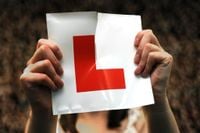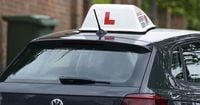Driving test waiting times in Britain have soared to unprecedented levels, as revealed by recent data from the Driver and Vehicle Standards Agency (DVSA). The average wait to book a practical test reached 20 weeks in February 2025, a significant increase from 14 weeks just a year earlier. This alarming trend highlights the mounting challenges faced by learner drivers across the nation.
The figures, obtained by the AA Driving School, show a stark rise in the number of test centres facing maximum waiting times. The number of centres where learners must wait a full 24 weeks has nearly doubled, jumping from 94 to 183. This backlog is exacerbating the difficulties for those eager to obtain their driving licenses.
As of February 2025, only 14 test centres were meeting the DVSA's target of having waiting times at or below seven weeks, a goal set for the end of 2025. This stark reality underscores the scale of the backlog and the urgent need for effective solutions.
In response to the growing crisis, the Department for Transport (DfT) has implemented a series of measures aimed at alleviating the backlog. Starting April 8, 2025, learners will only be able to make changes to their test bookings up to 10 working days before the scheduled test, an increase from the current three working days. This change is designed to encourage learners to wait until they are adequately prepared before scheduling their tests, thus improving the chances of passing on the first attempt.
Emma Bush, managing director of AA Driving School, expressed support for the DVSA's plans, stating, “We are pleased the DVSA has laid out its plans to reach an average waiting time of seven weeks by December 2025, and wholeheartedly support their goal. It is crucial efforts to meet this target are effective and result in this significant reduction.”
Bush emphasized the importance of reducing waiting times, particularly for young people who may be hindered by a lack of driving licenses. She noted, “There are rising numbers of young people who are registered as economically inactive. Bringing down driving test waiting times is vital to ensure a lack of driving licence does not become an ongoing barrier for young people trying to access education and employment.”
The DVSA has also launched a campaign to recruit and train 450 new driving examiners, which is a key component of their strategy to reduce waiting times. A spokesperson for the DVSA acknowledged that waiting times remain high due to increased demand and a shift in customer booking behavior. They stated, “We continue to work on implementing our seven-point plan to reduce waiting times and encouraging learner drivers to only book their driving test when their instructor agrees they are ready.”
Since the launch of this plan in December 2024, progress has been made towards the recruitment of new examiners, but the challenges remain significant. The extended waiting times are not only frustrating for learners but also reflect broader issues in the driving instruction landscape.
In addition to the logistical challenges, the cost of driving lessons and tests is another factor weighing on learners. The cost of a driving test is £62 during weekday daytime hours and £75 during evenings, weekends, and bank holidays. However, many learners are finding that third parties are reselling test slots at inflated prices, further complicating the situation.
The waiting time crisis can also be attributed to the aftermath of the COVID-19 pandemic, during which practical driving tests were suspended. This led to a significant backlog once restrictions were lifted. Moreover, industrial action has played a role in exacerbating the issue, with 48 days of action since December 2022 resulting in the cancellation and rescheduling of approximately 25,000 driving tests.
Statistics from the DfT reveal a concerning trend among young drivers. The proportion of 17 to 20-year-olds in England holding a driving licence has declined from 35% in 2019 to just 29% in 2023. Concurrently, the percentage of individuals aged 18 to 24 who are not engaged in education, employment, or training has risen from 12.4% in late 2019 to 15.8% by the end of last year.
These figures paint a troubling picture of the barriers facing young people in accessing both education and employment opportunities. The inability to secure a driving licence can significantly hinder their prospects, making it imperative for the DVSA and the DfT to effectively address the current backlog.
As learners continue to navigate the complexities of obtaining their driving licences, the urgency for reform is palpable. The DVSA's commitment to reducing waiting times to an average of seven weeks by December 2025 is a crucial step, but it remains to be seen whether these measures will yield the desired results in a timely manner.
With the stakes high for young people seeking independence and employment, the government must ensure that the planned initiatives are not only implemented but also effective in creating a more accessible driving test system. The future of many young drivers depends on it.






